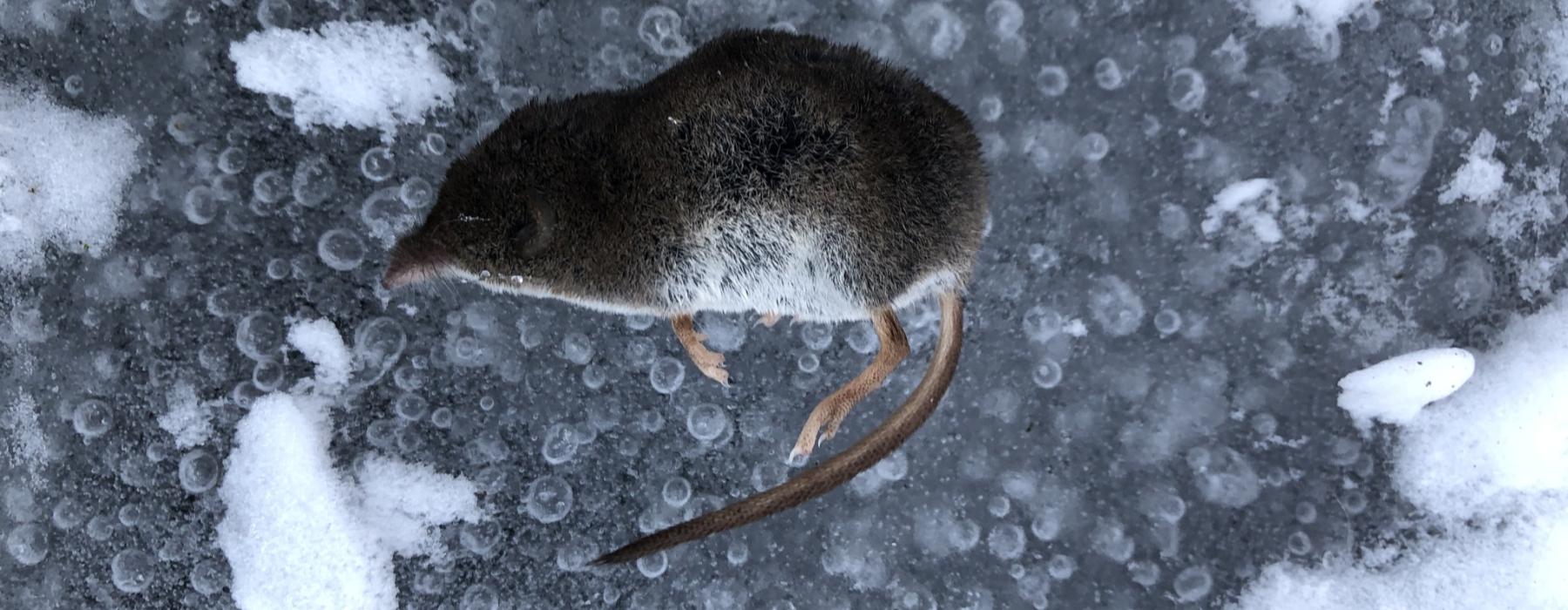Taxonomy
Order Soricomorpha
Family Soricidae
Contested Taxonomy: Eastern Water Shrew (Sorex albibarbis)
Hope et al. (2014) and Mycroft et al. (2011) findings suggest that the Eastern subspecies of the American water shrew (Sorex palustris ssp.) constitute a distinct species, the Eastern Water Shrew (Sorex albibarbis).
Common Names: American Water Shrew, North American Water Shrew, Northern Water Shrew
Basic Description
The water shrew is larger than most shrews with a long and skinny bald tail and small sometimes indiscernible ears. It has sizable paws, the back of which are larger, webbed, and have long white hairs. The water shrew is covered in soft dark gray buoyant fur that helps make it an adept swimmer. The upper parts of the shrew’s coat will get darker (almost black) in the winter and will be lighter with tinges of brown in the summer. The under fur of the shrew is whitish. The species does not exhibit differences in size or color between sexes.
Length: 130-170 mm total, tail length: 57-89mm
Mass: 8-18g
Habitat
Water shrews can be found in forests in Canada and the northern US, like Vermont. They are most often found in and around streams and other bodies of water. They prefer temperate forests with high humidity, lots of vegetation and plenty of natural features like rocks and debris.
Diet
Type: Omnivore
The water shrew dives to the bottom of small bodies of water to hunt for aquatic insects. Their favorite foods include the larvae and nymphs of flies, but they will also eat small fish, fish eggs and salamanders. Terrestrial food sources include worms, snails, insects, fungus and vegetation. Because of their small size and high metabolism, shrews have to eat every 3 hours in order to survive, but have been observed to eat every 10 minutes. They require .95 grams of food every day which is approximately 5-12% of their body weight.
Reproduction
Breeding occurs between the months of December and September. After a gestation period of 21 days, a litter of 3-10 young are born. Life expectancy is 18 months.
Conservation Status
- Vermont: S3 (Vulnerable)
- Global: G5 (Secure)
- IUCN Red List: Least Concern
More Information
Vermont Distribution
Banner Image:
Photo 110239578, (c) Robert D Stevenson, some rights reserved (CC BY-NC) / Cropped from original
References
Hope, A. G., Panter, N., Cook, J. A., Talbot, S. L., & Nagorsen, D. W. (2014).
Multilocus phylogeography and systematic revision of North American water
shrews (genus: Sorex). Journal of Mammalogy, 95(4), 722-738.
https://doi.org/10.1644/13-MAMM-A-196
Mycroft, E. E., Shafer, A. B.A., & Stewart, D. T. (2011). Cytochrome-b sequence
variation in water shrews (Sorex palustris) from eastern and western North
America. Northeastern Naturalist, 18(4), 497-508.







